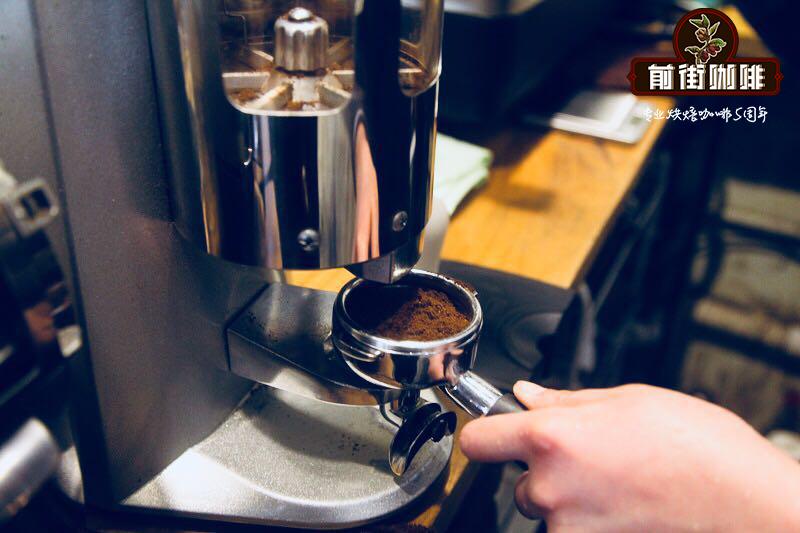How to fill the powder correctly when making espresso? What are the common mistakes in filling powder?

How to fill the powder correctly when making espresso?
1. Prepare the electronic scale.
Weighing the powder before each extraction is a necessary operation for making perfect Italian concentration. Even if it is a quantitative bean grinder, I suggest you regularly check the weighing accuracy of the bean grinder. After all, no matter how advanced the machine is, there will inevitably be errors and failures.
2. Rotating powder.
Whether the hand is dialed or straight out, as long as the coffee powder does not fall completely vertically, the powder layer will still show a certain degree of deviation under the influence of lateral acceleration, for example, when pulling the powder by hand, the effect of hard pulling is different from that of gently pulling-the harder the more to the left.
At this point, it is necessary to keep the powder at a uniform speed and rotate the handle at a uniform speed to keep the powder evenly distributed to different positions of the powder bowl-of course, it is impossible to be absolutely uniform, but at least it is much better than fixed powder.
3. Tap and pat.
After receiving the powder, gently knock on the bracket or table, can effectively eliminate the large gap in the powder layer, fluffy or strong, uniform or not, the distribution of the powder layer at a glance. With a little horizontal tapping, you don't even need additional cloth techniques to achieve a perfect cloth effect.
Common mistakes in filling powder
Loading too much powder, exceeding the size of the powder bowl, resulting in uneven extraction and soiling the head. Too little powder will also cause uneven extraction. When the handle was installed on the brewing head, the coffee pressed powder came into contact with the watershed, indicating that there was too much powder. You can check it by adding a handle to the head (without extraction) and removing it immediately. Then check to see if pressed powder has the mark of a circle. In addition, if pressed powder sticks to the water diversion network after extraction, it also means that the amount of powder is too much. If there is a pit on pressed powder after extraction, the amount of powder is less.
Press the surface of the coffee powder before pressing the powder with a hammer. It will cause the uneven distribution of powder density in pressed powder after the final filling. Water flows through the low-density parts instead of the high-density parts, resulting in uneven extraction.
Lifting the hammer quickly after pressing the powder will cause the pressed powder to be picked up slightly, so that there will be a gap between the pressed powder and the edge of the bowl. Water will flow through the gap with the least resistance, rather than through other normally compressed places, resulting in uneven extraction.
Rotating the powder hammer during the pressing process or at the end of the pressing process while maintaining this pressure will cause cracks in the pressed powder and produce a channel effect. Turning powder hammer is a habit of many people, but it is unnecessary and does more harm than good. The water will find cracks and flow through, rather than through other places, resulting in uneven extraction.
Before pressing the powder, many people use a powder hammer to knock the edge of the handle to spread the powder, or knock off the excess powder or hit the table mat with the handle. These practices will cause uneven density of powder or cracks after pressing powder. Some people do not flatten the noodles before pressing the powder.
Important Notice :
前街咖啡 FrontStreet Coffee has moved to new addredd:
FrontStreet Coffee Address: 315,Donghua East Road,GuangZhou
Tel:020 38364473
- Prev

What is organic coffee? What are the characteristics of organic coffee cultivation technology?
Organic coffee is coffee that does not use synthetic pesticides, herbicides or chemical fertilizers during its growth. These ways of growing coffee are conducive to maintaining a healthy environment and keeping the groundwater pure. After the coffee is harvested, be sure to use an organically certified roaster to process the coffee beans. Organic coffee is made of beans grown in the shade of trees.
- Next

The soul of espresso, espresso? What is Crema? How did you get it?
The soul of Italian coffee is espresso. Therefore, a cup of good espresso coffee is the beginning of everything and the soul of a cup of Italian coffee. The basis of all espresso coffee is extracted by the coffee machine: 9 atmospheres of high pressure, 90-94 degrees of water temperature, in 25-30 seconds, a cup of 30ml coffee. Solid and liquid is the dark brown liquid part.
Related
- Beginners will see the "Coffee pull flower" guide!
- What is the difference between ice blog purified milk and ordinary milk coffee?
- Why is the Philippines the largest producer of crops in Liberia?
- For coffee extraction, should the fine powder be retained?
- How does extracted espresso fill pressed powder? How much strength does it take to press the powder?
- How to make jasmine cold extract coffee? Is the jasmine + latte good?
- Will this little toy really make the coffee taste better? How does Lily Drip affect coffee extraction?
- Will the action of slapping the filter cup also affect coffee extraction?
- What's the difference between powder-to-water ratio and powder-to-liquid ratio?
- What is the Ethiopian local species? What does it have to do with Heirloom native species?

